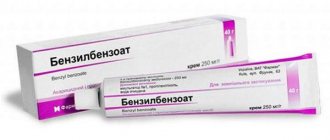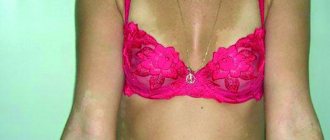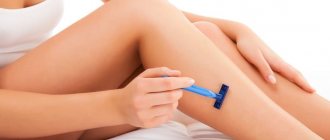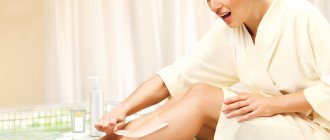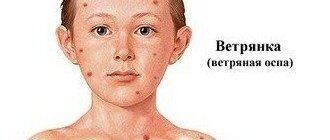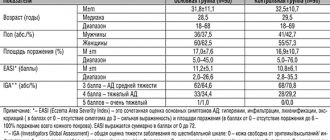Doctors Cost
Price list Doctors clinic
Radio wave removal of condylomas is an advanced method of removing these formations from the skin and mucous membranes. The procedure involves applying a radiosurgical instrument to the affected surface and has proven to be effective and relatively safe. The specialists of the Family Doctor clinic were among the first in the region to successfully use radio wave surgery, so our extensive practice allows us to achieve high efficiency of such manipulations.
Causes of condylomas and indications for removal
The reason for the formation of genital warts lies in infection with human papillomavirus. Formations that are located in areas of the skin subject to constant trauma must be removed first - constant mechanical stress can lead to infection (inflammation) and even malignancy. However, removal of condylomas with Solcoderm or radio waves is also preferred if they have formed on a “safe” area of the skin, which is dictated by aesthetic considerations.
Pharmacokinetics
The complex effect on the affected area of the skin of Solcoderm components - nitric acid, copper nitrate and organic acids (acetic, lactic, oxalic acids) - ensures rapid devitalization and fixation of the pathologically altered tissue area that has undergone treatment.
During therapy with Solcoderm, no significant absorption of active substances through the skin is observed; Taking into account the minimum volumes of the therapeutic dose, there is no need to worry about the systemic effect of the drug on the body.
Radio wave removal procedure
Radio wave removal of condylomas begins with preparatory measures. These include the following:
- Consultation and examination by a gynecologist;
- Determination of HPV type and concomitant infectious diseases;
- Blood test for HIV, syphilis, hepatitis;
- If necessary, colposcopy (examination of the affected area with a colposcope) and biopsy (histological examination of removed tissues is carried out after the procedure in order to clarify the diagnosis and exclude a malignant disease).
The removal operation itself is performed under local anesthesia: injections of anesthetics, a gel or a spray with an anesthetic effect can be used for these purposes. After performing anesthesia, the doctor proceeds directly to the removal - this is carried out with a radio knife, without contact with the patient’s skin. The method is based on the fact that high-frequency radio waves generate a large amount of thermal energy. The cellular fluid heats up, the structure is destroyed - the cells that are exposed immediately evaporate. Heat allows not only to “evaporate” the cells, but also to “seal” small vessels, which reduces the risk of bleeding and infection to zero and ensures rapid healing.
Skin lesions must be completely removed to prevent their reappearance. The area where the manipulation took place is treated with an antiseptic solution, and if necessary, an ointment application is carried out.
Precautionary measures
Use on inflamed skin areas is not allowed. In cases of pain, treatment should be interrupted immediately. Using too high a dose can cause acid burns and damage deep layers of tissue. Special precautions should be taken when applying Solcoderm solution to the face, especially to the skin areas located near the eyes. If Solcoderm solution accidentally gets into the eye, it is necessary to immediately rinse the eye with a large amount of water or a weak alkaline solution, for example 1% sodium bicarbonate solution. Drops of Solcoderm solution that get on furniture or clothing must be washed off with water, since Solcoderm can destroy materials. After biopsy of the affected area of skin, it is recommended to wait 8-10 days before starting treatment. Special care is required when treating benign skin tumors that were previously treated with other drugs and methods.
Before discarding the ampoule, the remaining solution should be washed off in running water. The empty ampoule can be thrown into a waste container.
Advantages of the method
Removing condylomas using the radio wave method has many advantages:
- Low-traumatic - ease of tissue dissection without the usual scalpel, no impact on the upper layers of the skin, no mechanical damage to capillaries and tissues;
- The ability to control the depth of exposure of the radioknife, as well as the area of impact on tissue - allows you not to affect surrounding healthy tissue;
- No rough scars after the procedure, which is especially important for patients planning pregnancy;
- Timely coagulation of blood vessels, which reduces the risk of bleeding and swelling;
- Speed (no more than 30 minutes) and high efficiency of the procedure, quick rehabilitation period;
- Antiseptic effect of radio waves - reduced risk of infection, inflammation;
- Painless due to the lack of impact on sensitive receptors;
- Complete removal of affected tissue; minimal possibility of their reoccurrence
- Possibility of removing condyloma of any location;
- Preservation of high quality material for further laboratory research.
However, despite the advantages, radio waves may be contraindicated in some cases.
Solcoderm solution for external use in ampoules 0.2 ml No. 1
Name
Solcoderm.
Description
Transparent colorless solution.
Release form
0.2 ml - colorless glass ampoules (1) complete with a plastic applicator (1) and glass capillaries (2) - contour cell packaging (1) - cardboard packs.
pharmachologic effect
A drug for the local treatment of benign superficial skin lesions. The complex effect of Solcoderm components on the affected area of the skin ensures direct intravital fixation followed by mummification of the pathologically altered tissue with which the drug comes into contact. The immediate effect of the drug is expressed in skin discoloration with the appearance of a characteristic pale gray or yellowish tint. The tissue devitalized after exposure to the drug is dehydrated and, as it mummifies, acquires a dark brown color. The resulting mummified scab sloughs off spontaneously after a few days or weeks. Healing occurs quickly; complications such as secondary infection or scar tissue are rare
Pharmacokinetics
When using Solcoderm, no significant absorption of the active substance through the skin is observed; Due to the minimal volume of the therapeutic dose, the drug does not have a systemic effect on the body.
Indications for use
For external use in the treatment of benign skin changes: common warts (Verruca vulgaris); plantar warts (Verruca plantaris); genital warts (Condylomata acuminata); non-cellular nevus, tested for benignity (Naevus naevo-cellularis).
Directions for use and doses
Solcoderm is for external use only; The procedure must be performed by a physician or qualified medical personnel under the supervision of a physician. Before the procedure, the area of the affected skin is treated with ethyl alcohol or ether. Solcoderm is applied directly to the affected area of the skin. To apply the drug to the skin, use a special plastic applicator with sharp and blunt ends, available in the package. The sharp edge is used mainly for applying the drug to small affected areas of the skin; The blunt end is used to treat large lesions. As an alternative method of applying the drug, the supplied glass capillary is used. Combined skin lesions with an area of 2-3 cm2 can also be treated using a glass capillary. To fill a glass capillary with the drug, it must be immersed in Solcoderm solution for several minutes. Particular care should be taken during application, avoiding applying too large volumes of Solcoderm solution and damaging the deep layers of tissue. It is necessary to apply as much solution as the tissue of the affected skin area absorbs. Solcoderm is carefully applied to the affected area of skin with a plastic applicator or glass capillary and then distributed over the surface of the selected area of skin with light pressure using a plastic applicator until the solution completely penetrates the tissue. Over the next 3-5 minutes, it is necessary to carefully observe the changes occurring in the treated area: skin discoloration occurs with the appearance of a characteristic pale grayish or yellowish tint. The procedure should be repeated until the above changes in skin color occur. When treating keratinized warts, the top layer of the stratum corneum should first be removed. Affected areas of skin with a diameter of more than 10 mm are treated with Solcoderm only if it is established that only the top layer of skin is pathologically modified. In the presence of numerous foci of skin lesions, treatment with Solcoderm should be carried out in several stages, with an interval of approximately 4 weeks. During each procedure, no more than 2-3 lesions with a total area of no more than 2-3 cm2 can be treated. Within a few days after the procedure, the treated area of skin becomes dark brown and dries out to form a scab. In case of unsatisfactory mummification of pathologically altered tissue, the procedure can be repeated after a few days. In order to promote fixation and mummification of pathologically altered tissues that have undergone treatment, the affected areas should be treated 2-3 times a day with a swab moistened with a 70% solution of ethyl alcohol (especially after taking a bath or after washing). Do not remove the scab by scraping or using mechanical means. The scab must fall off spontaneously, otherwise tissue healing processes may be disrupted and scars may form.
Use during pregnancy and lactation
Studies to study the possible effect of the drug on the body of women during pregnancy and lactation have not been conducted to date. Solcoderm can be used during pregnancy and lactation only in cases where the potential benefits of its use outweigh the possible risk to the fetus or child.
Precautionary measures
Solcoderm is a strong acidic solution and has a damaging effect on nerve endings. The use of the drug on inflamed areas of the skin is not allowed. In cases of pain, treatment should be interrupted immediately. Using too large doses of the drug can lead to acid burns and damage to deep layers of tissue. Special precautions should be taken when applying the drug solution to the face, especially to the skin areas located near the eyes. If accidental contact of the drug with healthy skin occurs, it should be immediately removed using a cotton swab moistened with water. If Solcoderm accidentally comes into contact with the eyes, it is necessary to immediately rinse the eye with a large amount of water or with a weak alkaline solution, for example, 1% sodium bicarbonate solution. Drops of Solcoderm solution that get on furniture or clothing must be washed off with water, since the drug can destroy the materials from which they are made. After a biopsy of the affected skin area, it is recommended to wait 8-10 days before starting treatment with the drug solution. The application of an occlusive dressing during treatment is not recommended. Treatment for careless ingestion corresponds to general measures for acid poisoning: drink plenty of water as quickly as possible and go to the clinic. Special care is required when treating benign skin tumors with Solcoderm that have previously been treated with other drugs or other methods. Disposal of used ampoules: before discarding the ampoule, the remaining solution should be washed off in running water. The empty ampoule can be thrown into a waste container.
Interaction with other drugs
The interaction of Solcoderm with other topical medications has not been established.
Contraindications
Compound
1 ml of solution contains Active ingredients: Nitric acid 70% Glacial acetic acid Oxalic acid dihydrate Lactic acid 90% Copper (II) nitrate trihydrate Excipient: Purified water
Overdose
An ulcer resulting from an overdose is treated like a regular wound.
Side effect
In cases of improper use of Solcoderm (use of too large doses), deep layers of tissue may be damaged. Treatment with Solcoderm is often associated with a short-term burning sensation at the site of application of the drug, which usually lasts for several minutes. If severe local irritation and severe itching occur in adjacent areas of the skin, it is recommended to use a cream containing steroid components or an ointment that has an anesthetic effect. The use of Solcoderm can lead to changes in skin pigmentation and the formation of scar tissue. However, provided that the healing process proceeds normally, is not accompanied by infection, and the resulting eschar disappears spontaneously, the risk of such undesirable effects is negligible.
Storage conditions
Store at a temperature not exceeding 25 °C. Keep out of the reach of children! Handle with care!
Buy Solcoderm solution for external use in ampoules 0.2 ml No. 1 in the pharmacy
Price for Solcoderm solution for external use in ampoules 0.2 ml No. 1
Instructions for use for Solcoderm solution for external use in ampoules 0.2 ml No. 1
Recovery after deletion
After the doctor removes the condylomas, he will definitely explain the features of the recovery period. In the vast majority of cases, no complications are observed if you follow the specialist’s recommendations for 4-6 weeks:
- Avoid visiting baths, saunas, swimming pools, beaches, solariums;
- Prefer a warm shower to a hot bath;
- Limit physical activity, eliminate heavy lifting;
- Maintain sexual rest
- Use pads and avoid tampons;
- Don't drink alcohol.
Composition and release form
| Solution for external use | 1 ml |
| nitric acid 70% | 580.7 mg |
| acetic acid 99% | 41.1 mg |
| oxalic acid dihydrate | 57.4 mg |
| lactic acid 90% | 4.5 mg |
| copper nitrate trihydrate | 48 mcg |
| distilled water | up to 1 ml |
in 0.2 ml ampoules complete with applicators and capillaries; 1 set in box.
special instructions
Since the Solcoderm solution is chemically unstable after opening the ampoule, a new ampoule must be used for each therapeutic procedure. Before opening the ampoule, shake it and knock down the solution that gets into the upper part of the ampoule. The neck of the ampoule breaks along the line. Keep the opened ampoule strictly vertical by securing it in a special slot in the contour packaging for ampoules. When treating affected areas of the skin located next to the mucous membranes, incl. near the eyes, special precautions should be taken. If severe local irritation and severe itching occur in adjacent areas of the skin, it is recommended to use a cream containing steroid components or an ointment that has an anesthetic effect. Do not remove the scab by scraping or using mechanical means. The scab must fall off spontaneously, otherwise tissue healing processes may be disrupted and scars may form. Until the lesion treated with Solcoderm is completely healed (approximately 2–4 months after therapy), exposure to direct sunlight and UV radiation should be avoided.
Solcoderm: reviews
Solcoderm has many positive reviews on thematic forums (but it is better not to use it for children). It is possible to remove skin tumors in children using this drug if the child has reached 5 years of age.
“ For a long time I was bothered by a wart on the inside of my nostril. She did not cause any discomfort, but I still felt her presence. A dermatologist advised me to try the cauterizing agent Solcoderm. He did everything in his office - the tumor dried up after cauterization, and fell off after a few days. There are no scars left ." Elena, 46 years old.
“ Only the Solcoderm solution helped me in removing several plantar warts that had been tormenting me for quite some time. If I walked for a long time, the growths became inflamed, which was extremely uncomfortable and painful. I had to treat it with Solcoderm several times, but I’m happy with the result - it’s as if nothing had happened .” Oleg, 29 years old.
In this video, starting from the 4th minute, an experienced dermatovenerologist reveals all the secrets of using Solcoderm for warts, papillomas and other formations on the skin:
Solcoderm during pregnancy
There is no precise research data regarding exactly how Solcoderm affects a woman’s body and the developing fetus during pregnancy. Therefore, it is recommended not to use this drug during this period and during breastfeeding unless absolutely necessary.
Analogues of Solcoderm, which have a similar mechanism of action, are also almost all prohibited for use during pregnancy. There is no danger of their overdose; it is simply important to prevent any negative chemicals from entering the blood of the expectant mother.
If more gentle drugs do not help, then it is recommended to postpone the issue of removing papillomas or warts until the period after childbirth.
